Geometric patterns are noticeable in the rendering of snow-capped peaks under the sky. Against the background is a vast expanse of land bearing the rejoicing of Kazakh herders. And these bold, remarkable lines portray an exuberant scene of the daily life of the Kazakh shepherdesses. In 1948, Chinese artist Dong Xiwen created the oil painting titled "Kazakh Shepherdesses." With geometric shapes and striking colors, the masterpiece presented his poetic imagination of Kazakh ethnic life.
11:58
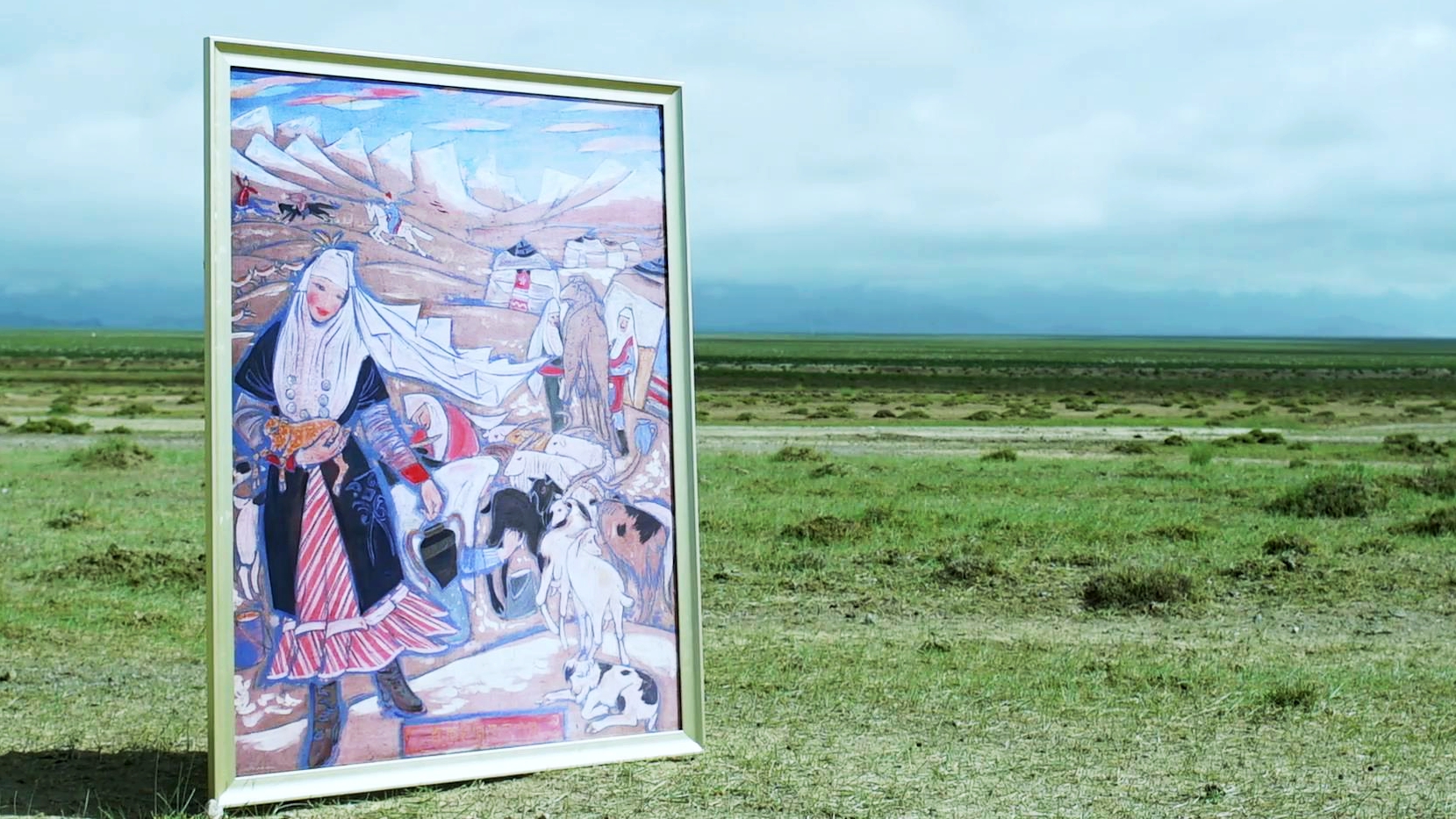
Contemplating the canvas in the hall of the National Art Museum of China, viewers can sense a familiarity that is hard to identify. There is a resemblance in style to the murals of the Mogao Grottoes in Dunhuang, an ancient treasure-trove of fine art hidden in a sea of sands. In the 1940s, the dazzling wall paintings in the grottoes inspired Dong. He had explored the Mogao Grottoes to seek inspiration from the glory of ancient images before he started his painting of the Kazakh shepherdesses.
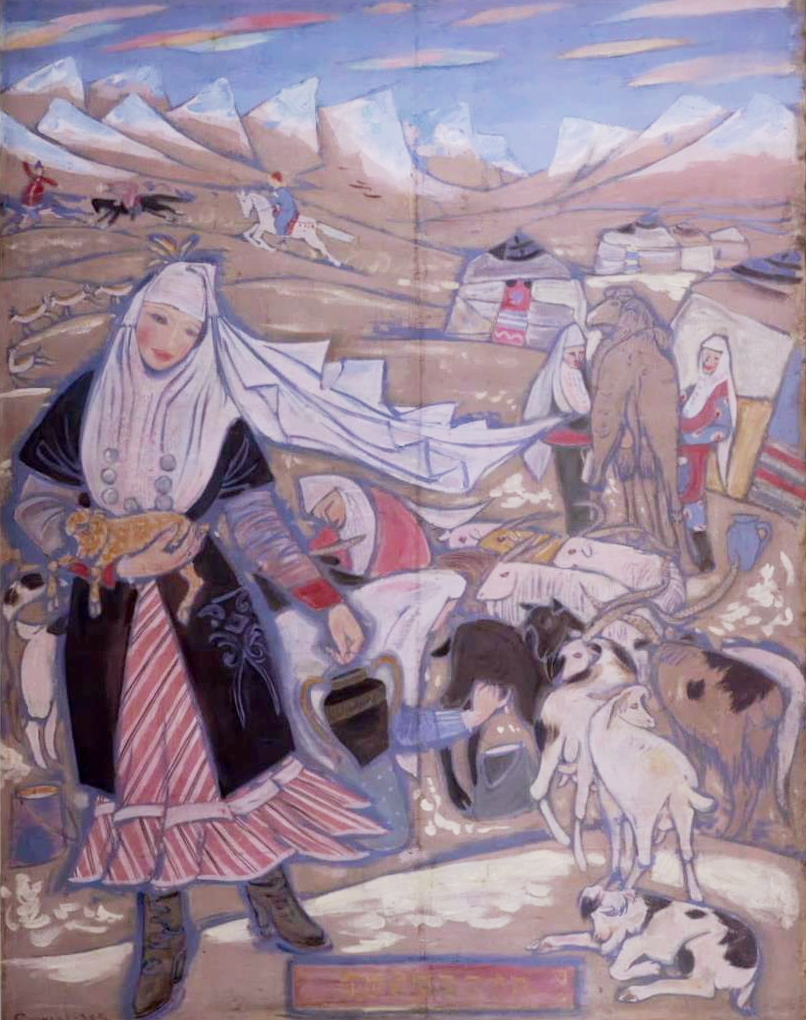
Painting "Kazakh Shepherdesses" by Dong Xiwen /CGTN
Painting "Kazakh Shepherdesses" by Dong Xiwen /CGTN
In 1942, the southwestern Chinese city of Chongqing experienced repeated bombings. Dong Xiwen was a recent arrival to the war-torn city. He was an outstanding graduate from the Hangzhou Fine Art Academy; but in Chongqing, Dong struggled to make ends meet as a movie caption writer. Often distracted by the shrill air-raid sirens, the painter was at a loss. He yearned to create artworks to contribute to the war effort, but he couldn't see a clear path for the future of his country and for his professional career.
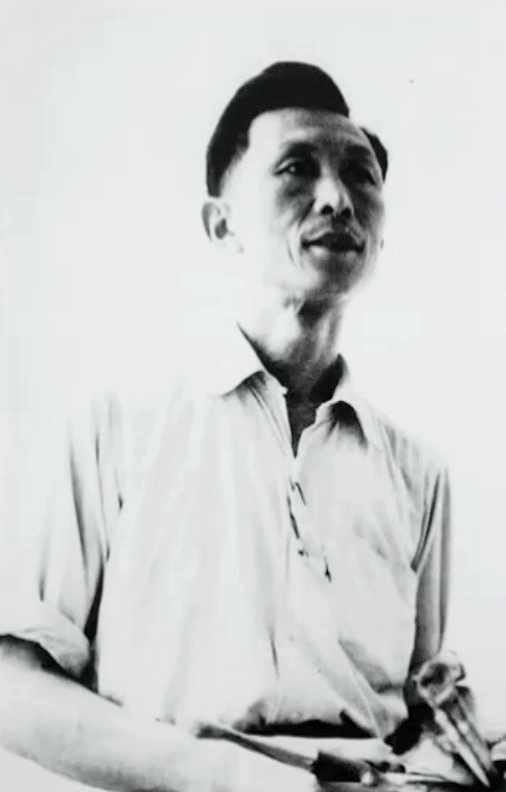
File photo of Chinese painter Dong Xiwen /CGTN
File photo of Chinese painter Dong Xiwen /CGTN
Fortunately, an unexpected encounter with an exhibition of the Dunhuang murals rekindled the flames in his heart. He became obsessed with these ancient Buddhist images, and lingered in the exhibition venues from dawn to dusk. In these centuries-old wall-paintings, Dong saw the essential temperament of Chinese fine art. He was especially impressed by the grace and dignity of the figures portrayed.
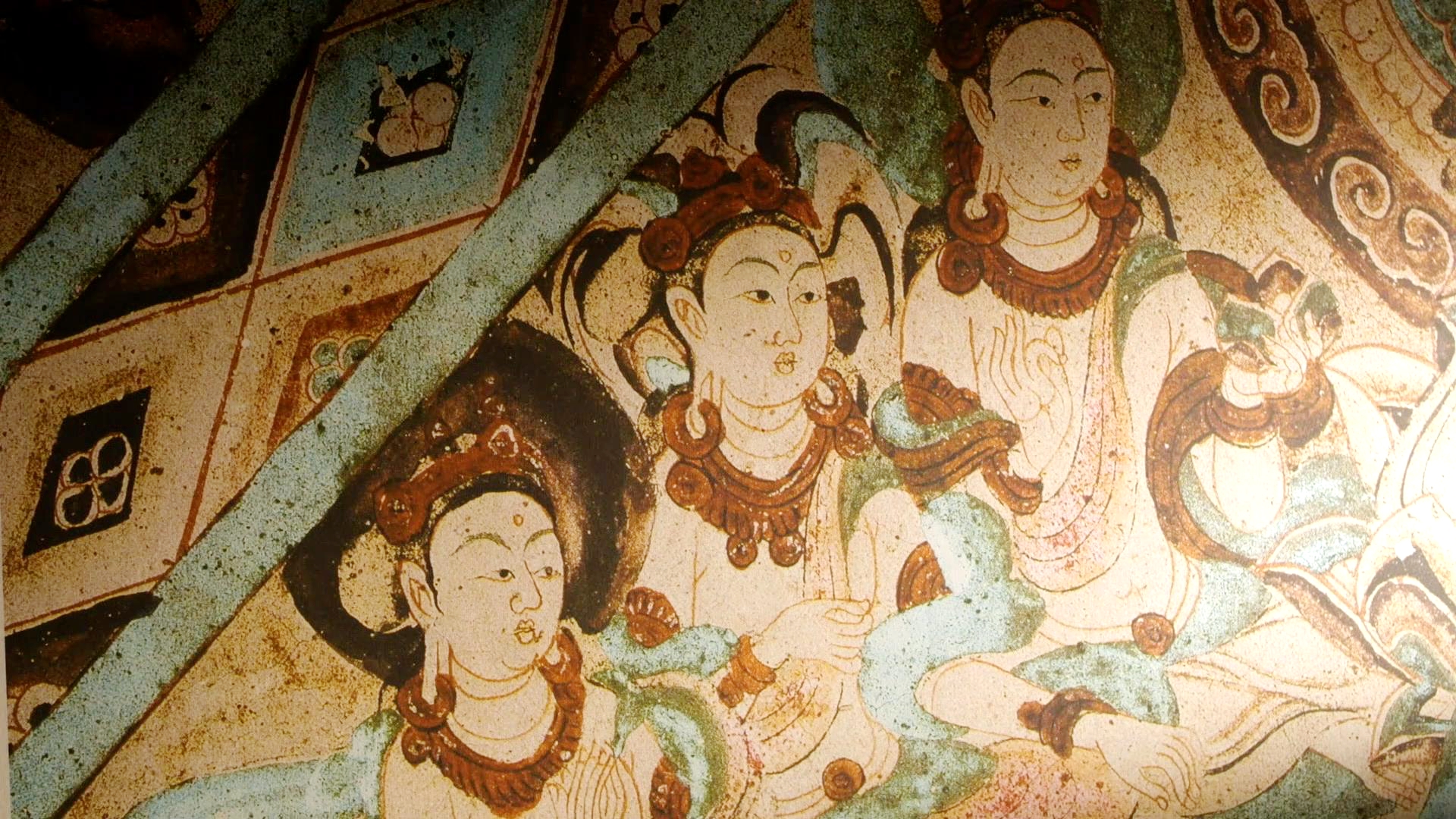
Details of the murals at the Mogao Grottoes in Dunhuang, Gansu /CGTN
Details of the murals at the Mogao Grottoes in Dunhuang, Gansu /CGTN
Dong Xiwen set out from Chongqing and started an arduous journey. With his feet, he measured the vast distances of inhospitable deserts, driven by a burning conviction deep in his heart. It took him three months to arrive in Dunhuang, where he immersed himself in a holy temple of ancient art.
Lit by a flickering lamplight, the shapes and figures in the wall-paintings were reduced to an array of geometric patterns and blocks of lively colors. Dong spent countless hours in the dim caverns, copying and sketching, and not a single detail escaped his attention. The scenes of daily life from over a millennium ago came alive like ballads, vividly enacted on his canvas.
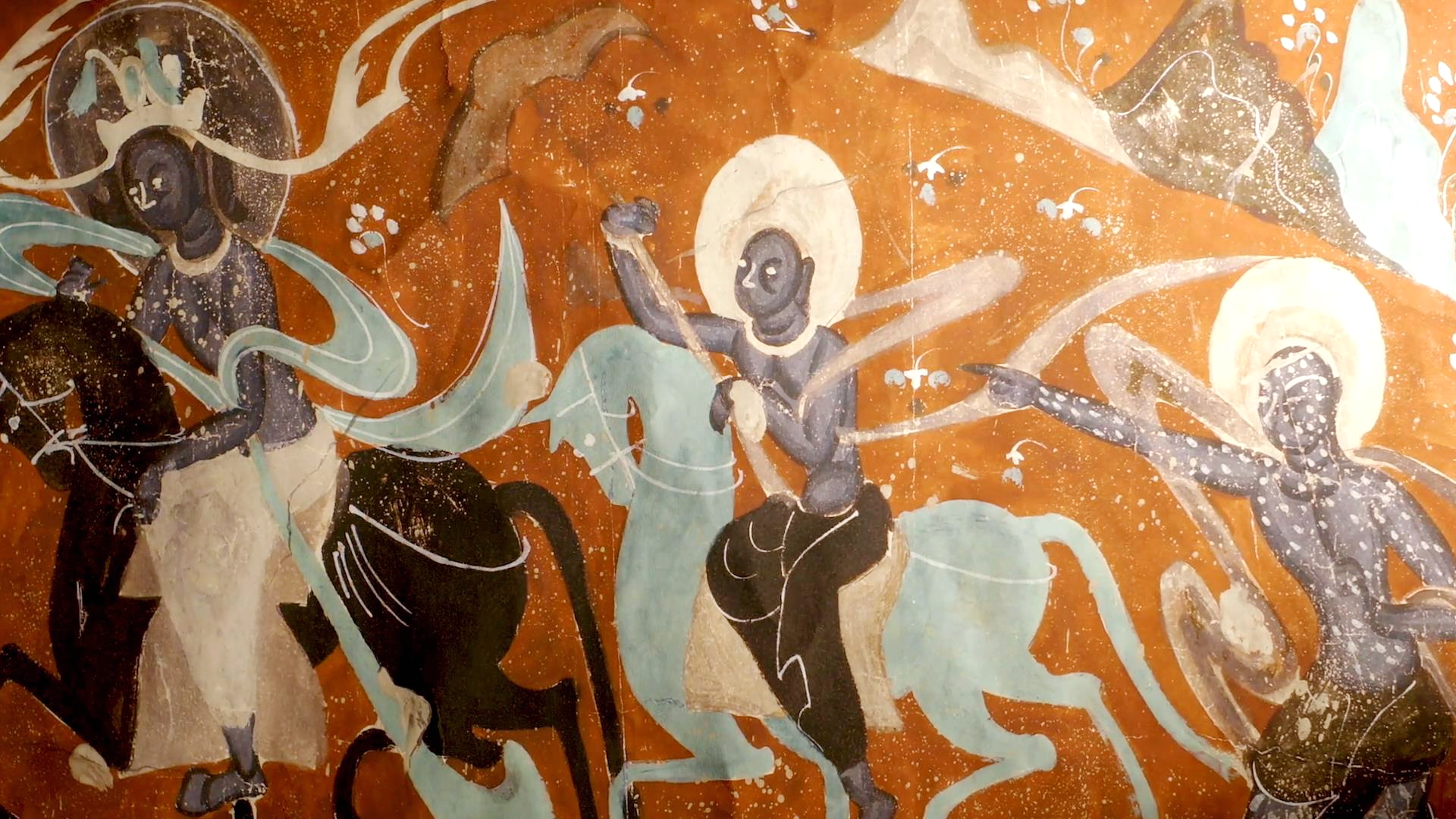
Details of the murals at the Mogao Grottoes in Dunhuang, Gansu /CGTN
Details of the murals at the Mogao Grottoes in Dunhuang, Gansu /CGTN
Apart from studying the cave murals, Dong also travelled across the vast land. Both natural scenery and human activity were recorded in his sketches. One day, Dong came across a Kazakh tribe that had lived near Dunhuang for generations. He was impressed by the snow, mountains, and their flowing clothing. The images of Kazakh pastoral life merged in his mind with the Dunhuang wall paintings created centuries before.
Upon arriving in Beijing in 1948, the pastures of Kazakh herders still resonated in Dong's imagination. The colorful clothing, the rosy cheeks of Kazakh girls, and the steaming goat milk… all these features of Kazakh life soon found their way onto the artist's canvas. He boldly discarded the perspective, volume, and lighting of western oil painting, and instead relied on the sturdy contours and geometric patterns of the Dunhuang wall paintings. The innovative use of flat blocks of color generated a refreshing visual harmony and rhythm.
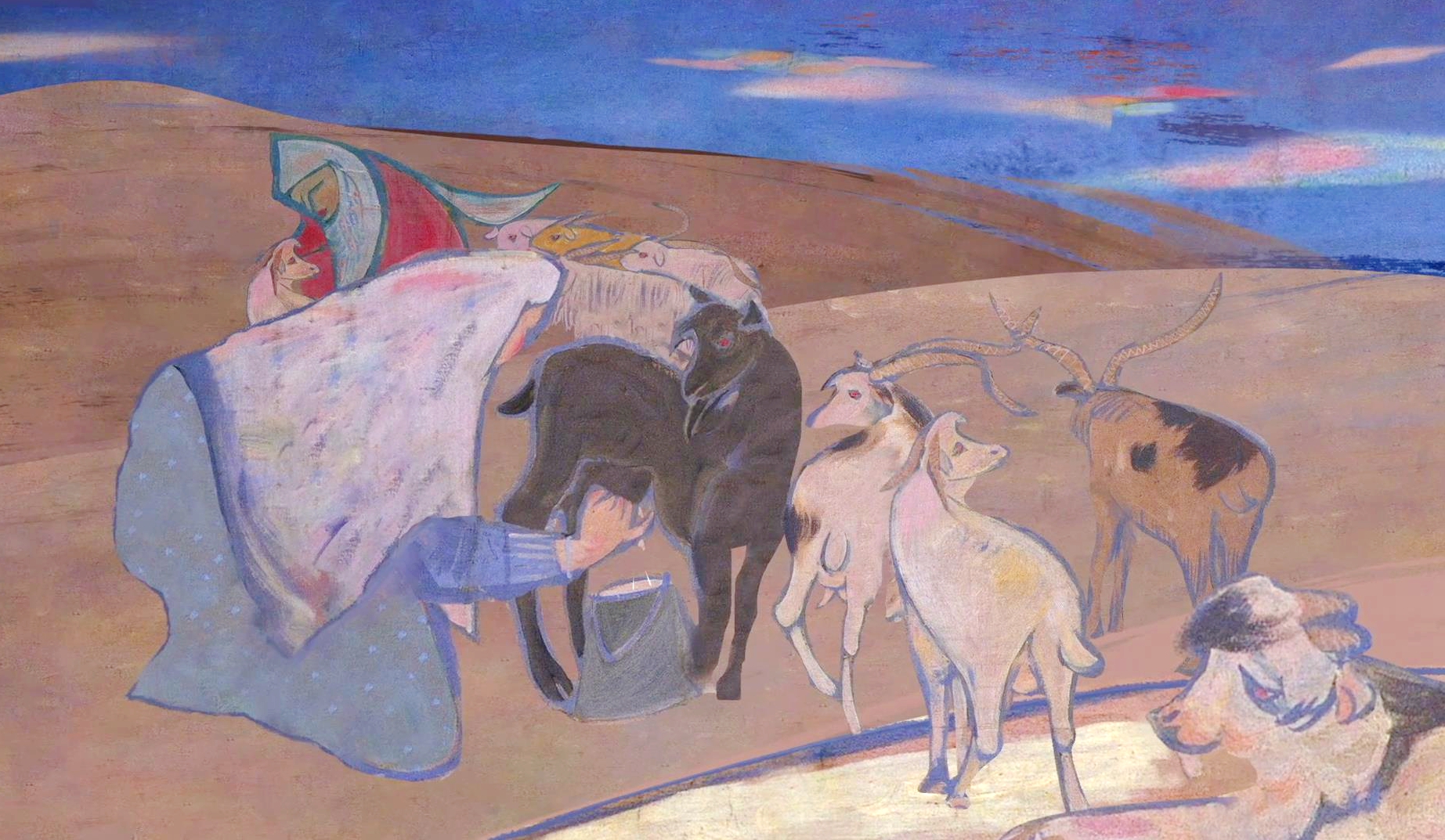
Details of the painting "Kazakh Shepherdesses" by Dong Xiwen /CGTN
Details of the painting "Kazakh Shepherdesses" by Dong Xiwen /CGTN
Dong Xiwen went on to explore the path of adapting the oil medium to the spirit of Chinese fine art. From the famed "Founding Ceremony of the People's Republic of China" to the monumental "Renewal of Thousand-Year-Old Land" which portrays Tibetan farmers plowing the land, the Chinese style in his works has proved a hallmark of the nation's artistic confidence.